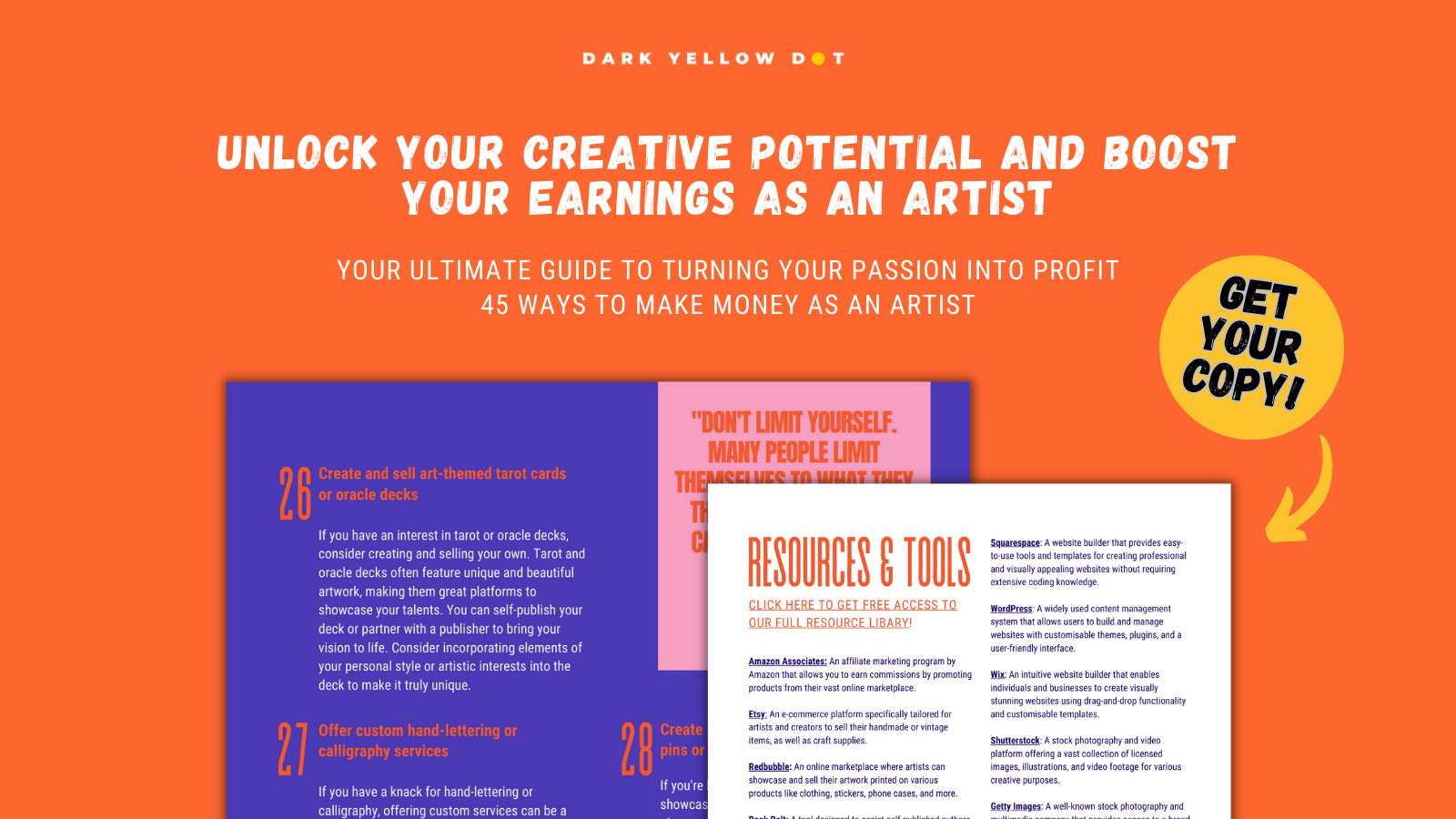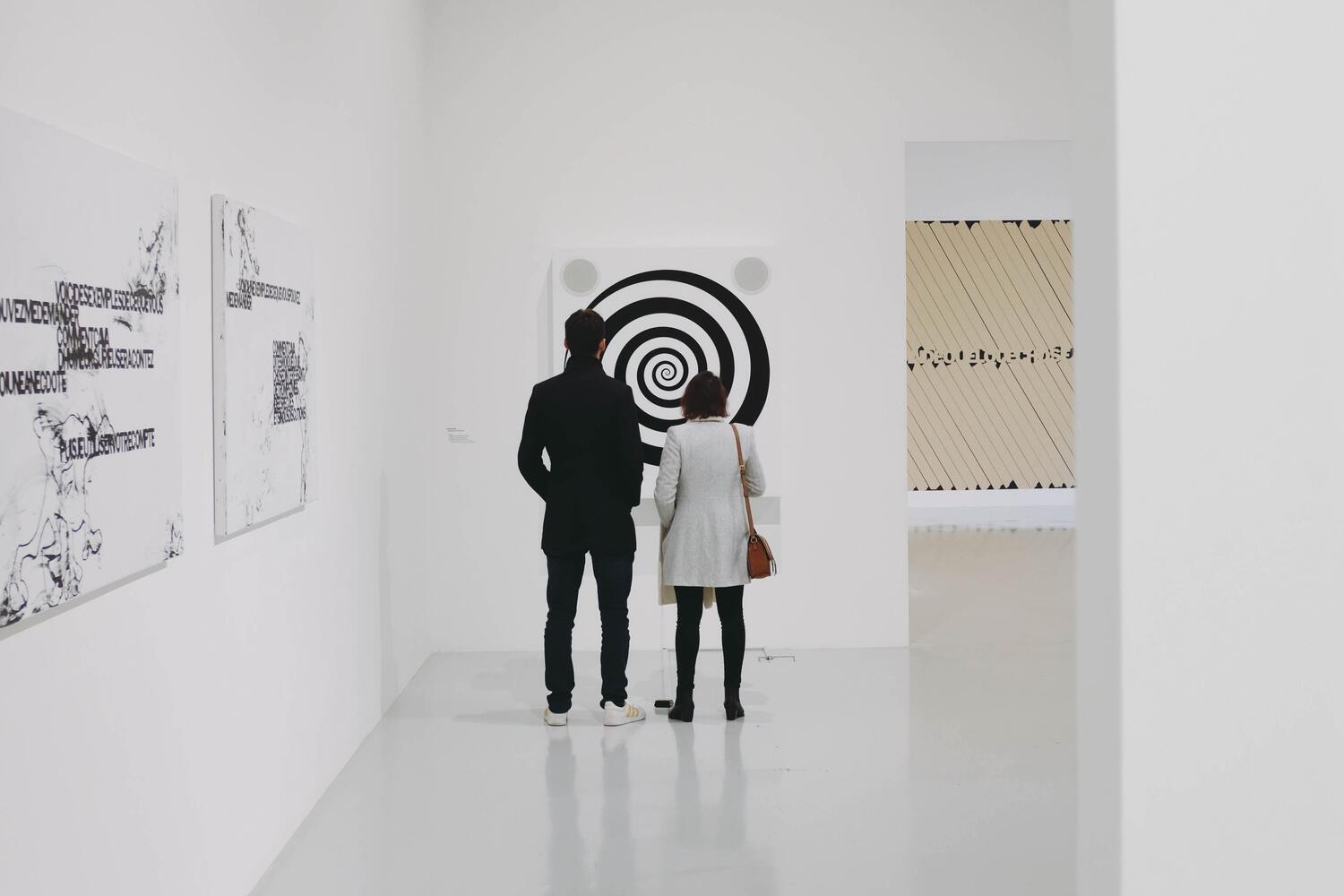


How To Write A Reliable Artist Statement That Makes Sense
Your Guide To Writing The Perfect Artist Statement in 2024
Heads up: This post may contain affiliate links, Learn more.
Writing an artist statement can feel like one of the hardest tasks you will have to do as an artist. You’ve gone through all this hard work and dedication when making the work, but now you You can’t help but think it does not represent you properly, or it’s cheesy, easy, and uninspiring. If you are lucky, though, you’ll have to write many different kinds of Artist Statements throughout your career. Keeping an archive of these will be helpful for when you work on your retrospective, as they will outline key moments in your artistic development.
What is an artist statement?
An artist statement is usually a one-sided page of text where you outline your artistic vision, mission, and reasoning. It’s a document you’ll often be asked to submit along with an application to a graduate program, a residency, a grant, and sometimes a show. Even if you’re not applying to these opportunities, an artist statement is a great document that can help you explain your art to people.
The artist statement is not to be confused with an artist bio. Instead, the artist statement focuses on the what, why and how – rather than the ‘who’.
How to format your artist statement
Depending on what you’re applying to, you may be asked to submit anywhere between 200 – 1000 words. Usually, anything that can comfortably fit on one side of A4 with a font size of 12 should be sufficient, but always check your application instructions.
Artist Statement Formatting
– Usually between 100-1000 words
– One A4 page
– 12 point size font
– Clear, easy to read font
It’s a good idea to write a long, all-encompassing artist statement at first and then use that to create smaller, targeted versions for each of your subsequent applications. If you are submitting to a gallery, your statement might be printed on the catalogue or put up on the wall next to your work. Along with your short bio, it might also be included online or in any text relating to the exhibition your work is in.
What should an artist statement include?
Typically, an industry standard artist statement will include:
– A couple of short sentences to introduce your work.
– A visual/thematic description of your work, using one or a few particular examples.
– Explanations of why you create the work and the wider context that it fits within.
– What inspires you to make the work.
– A description of how you’re able to convey the intended ideas and themes in your work.
– A short summary/conclusion.
What should an artist statement sound like?
With an artist statement, it’s always best to avoid art jargon and speak truthfully. Your writing is supposed to be your own words; readers will not be interested in empty statements and broad generalisations. The tone you want to strike is honest and unique. You want your personality to shine through, both the personal and the political.
Since this is a description in defence of your work, it is the place where your art and yourself meet on paper. The statement, in a way, is the only place where you can represent your work. So take this chance to be specific, teach us how to see your work and how to understand it. It’s a chance to introduce the language you want others to use around your work; what words do you want associated with your art?
How do I begin an artist statement?
Knowing how to start is hard, but here’s some tips to make the process a little less daunting.
Take a look at all of your work
First and foremost, you need to take an in-depth look at all of your work. If you have a portfolio accompanying your application, lay out the pieces in front of you. If not, gather some work you feel proud of and spend some time with it.
– What are some words that come to mind?
– What are some visceral reactions you have to it?
– What does it feel like?
If nobody has written about you yet, have a studio visit! Invite a friend or colleague over to take a look at your body of workand offer some adjectives, images, or questions that come to mind. Engaging in a conversation about why you do what you do and why you have made certain choices can help you identify your key drives in your practice.
Develop your words further
Look up the synonyms to the words have been used to describe the work and see if there are other words that sound more specific. We usually get the broad and general terms out the way first, before finding more advanced words that really correlate with our practice.
Make an outline
As a creative, we can often find it difficult to communicate our thoughts into words. Having a structured outline can help you to stay on track when you may have otherwise got lost. It also sets out a clear objective, helping you to cover all the necessities. Plan out your short introduction and decide what area of your practice you want to discuss next. A common route is to begin by describing the visual appearance of the work which then leads you into why you made those visual choices.
Tips for writing an artist statement:
Look towards artists you admire
Think about artists you love that have influenced your work. Why are you drawn to them? You might like someone’s technique, someone else’s politics, another person’s career, and some other artist’s themes. Identifying exactly what it is that you are inspired by can help you outline how you sit within the larger context of their artistic practices.
Ask yourself: Whose shoulders am I standing on? Who’s ideas have I borrowed? Who am I challenging with my work?
Activate your statement
Think of your work as doing something, whether it is extending, contradicting, questioning, or investigating a particular issue, question, subject, material, etc. This will push you to write an active statement. Using active verbs will drive your writing and keep you from non-linear and flowery statements that merely describe an idea.
Find real examples
Go to your favourite artists’ websites and see how they write. Take note of the kinds of words they use and the form of their writing as well as the content. What kinds of verbs do they use? What tense are they in? How many adjectives do they use to describe their work? How long are their sentences? This can give you a rough idea of how an artist statement should look and sound, but be sure to add your own thoughts and writing style when it comes to drafting.
Things to avoid when writing an artist statement:
Thinking of it as a CV
If you are applying for a job or grant, your artist statement is not a CV or resume. Think about it less as what you have done so far and more as why you have done it. Your artist statement should be a rationale, an active invitation to piece together your work based on your intentions, your journey, and your influences.
Writing it like an academic essay
If you are applying to a graduate program, your artist statement is not a writing sample or essay. Those are writing pieces showcasing your academic work and ability to write analytically. Your artist statement is an opportunity to show your personal voice and style, to blend your artistic work with your research and academic inspirations.
Turning it into a bio
If you are submitting work to a show or gallery exhibit, your artist statement is not your short bio. Along with your statement, you will usually submit a short 60 – 100 word bio outlining your studies, main gallery exhibits and place of work. Your artist statement might reference some of the facts in your bio but leans more toward framing the work in the exhibition, a chance to speak artistically, not just factually. It also focuses on the present and the future rather than the past.
WHAT ADVICE DO YOU HAVE FOR WRITING AN ARTIST STATEMENT? LET US KNOW IN THE COMMENTS BELOW.
Don’t forget you can always share your art with us, just use #darkyellowdot for a chance to be featured on our Instagram.
Thank you for reading and if you found this article useful, share it around, that makes us happy. To receive more posts like this and updates, join our mailing list, everyone is welcome.
NEED MORE ADVICE?
ARTICLES TO HELP:
How To Write A Super Artist Bio Using This Simple Example
How To Create An Use The Perfect Artist Signature
How To Write A Successful Art Proposal (Easy Tips For Artists)
COURSES TO HELP:
How To Become A Professional Artist: Tips For Success
Write an Effective Artist Statement – Build Your Creative Business: Series for Artists and Makers








